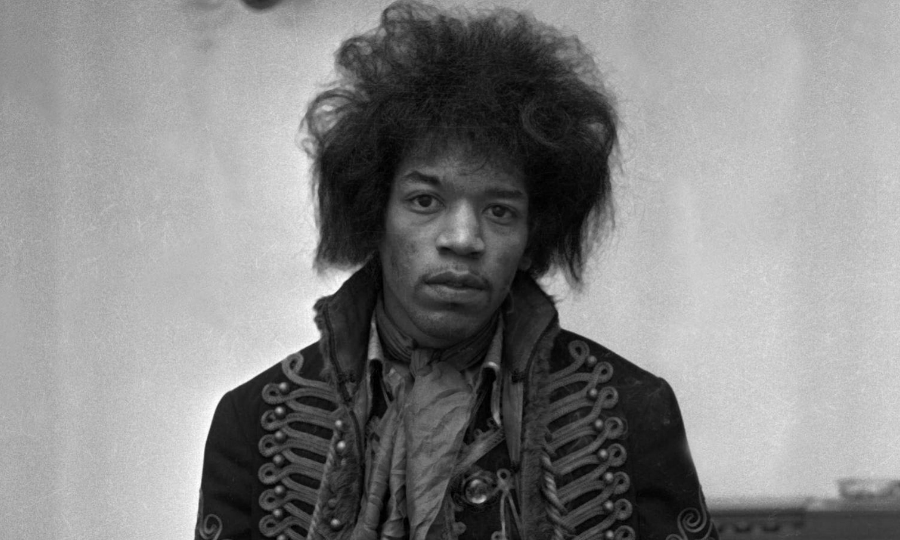Occasionally an artist comes along that impacts music and imprints the collective psyche of the time in a way that can only be called unique. They encapsulate a sonic landscape that quickly becomes synonymous with their identity as an artist. Jimi Hendrix, Radiohead, Jeff Buckley, and the Grateful Dead are those artists. These are the chords that defined them.
Jeff Buckley once said of people trying to understand his music, “Well, it’s their funeral.” Jeff’s music was unique, complex, and drenched in blue. As a result his sound was defined by sixth, ninth, and slash chords which gave his music an ethereal quality. The same can be said of Hendrix and the Grateful Dead as they re-invented blues-rock. The secret ingredient between chord and artist is emotional cohesion.
Get inside the sound of these four iconic artists with the chords they made their own, and the voicings that defined their sound.

From the legendary E7#9 of Jimi Hendrix to the suspended chords of Radiohead, these are four iconic artists whose unique chords added flair to contemporary rock music.
Jimi Hendrix
When Jimi Hendrix sent Purple Haze to Reprise Records for remastering they wrote, “Deliberate distortion. Do not correct.” It was an unhinged sonic wonderland and a key piece of an album that shook the world and left it forever changed.
Now dubbed the ‘Hendrix chord’, the E7#9 is the ideal blend of funk and blues perfectly paralleling the the dissonance of Purple Haze. Famously opening with staccato tri tones, Jimi was a master of tension and release, the 7#9 chord his eponymous embodiment of sound.
Normally, a major third and minor third sounded together would produce a naturally unpleasant dissonance, but the 7#9 “Hendrix chord” structure spreads the two notes far apart enough and includes enough root notes so that it gives the chord a rather unique a somewhat jazzy voice.
Then of course you have the double stops and teeth, but that’s a story for another time.
Radiohead
More than perhaps any other band, Radiohead have mastered the art of rock production. Almost every track inhabits its own sound-world, from the amphibious programming of In Rainbows to the lush, maximalism of OK Computer. While their chords are not as singularly prominent as Hendrix, Thom Yorke and Jonny Greenwood share a natural affinity towards (add) chords, suspended, and #11 chords to reflect a sense of paranoia of modern alienation that permeates their lyrics.
The ultimate testament to Radiohead’s glory is the succinct 6:28minutes of sound titled Paranoid Android. It sports its fair share of disturbing chords, the apex of which being a Dm(add9)/F in the chorus. This is squeezed right between a Gm6 and E7. There is an also an A7sus4 to finish each verse and inject just enough tension at the build of the progression. Album buddy Karma Police also throws an Am(add9) in the verses to produce a sultry, exotic flair.
Pyramid Song mirrors this exotic, eastern feel with an E(add9). A perfect daydreamy offset to the A6 and the songs strange, stilted time signature which has confounded music listeners to this day.
Jeff Buckley
Jeff Buckley’s sound is widely recognised as one of the purest and most enduring of the 1990s solidified by his debut, and only album, Grace. While many never look past the incredible range and tonal freedom of his five octave voice, Buckley was also an extremely competent songwriter. His use of sixth and ninth chords lend a beauty and movement to his progressions that perfectly supplement his vocal inflection and improvisation.
A gorgeous use of this is during Mojo Pin wherein he plucks alternating C6 and Am chords, generating a mysterious, uplifting feeling. The untouchable 6/8 exorcism that is Grace employs an ascending progression of G6 – A9 – Cmaj7 – Dsus4add6. The A and the C chords sound really colourful and enlightening whilst the open strings, and the D chord sound simply unique. Jeff does this by tuning to drop D and sliding power chords to the 5th, 7th, 10th, and 12th fret. This use of open droning strings under sixth and ninth chords are often referred to as ‘Buckley’ chords.
Lover, You Should’ve Come Over is likely Buckley’s most accomplished piece of chordal song craft. The use of slash chords to create linear movement in the bass line creates a smooth motion from a Dmaj to C9. This leads to an absolutely stunning movement sliding up the neck: Gm6 – A6add9 – Bm11 – A9/C# – E6 – D9add6.
Check out Lover, You Should’ve Come Over here.
Grateful Dead (Bob Wier)
Living in the shadow of one of the greatest guitar players of all time can eclipse creation in many circumstances. If you abandon ego however, you get what Bob Weir was to Jerry Garcia in the Grateful Dead. Often referred to as the greatest improvisational rock band of all time, Bob Weir’s inversions and strange chord voicings allowed Garcia the freedom to improvise thoughtfully and move through the songs in interesting and unique ways.
“I listen to the leading tone, but I also listen for the sum sound of the chord,” said Wier on improvisation. “I try to select chord voicings that grace the lead player’s pivotal note. For example, if we’re in the key of A, and the lead player is working around the 5th, then I will not. I’ll work around, say, the 3rd, and then move that up to perhaps the 4th or 6th. I sort of circle the lead player’s pivotal note. I listen for the lead player’s motion, and if the pivotal note moves, then I find another complementary note to pivot around.”
This way, Wier was able to to make typical 12 bar blues progressions feel incredibly fresh. By inverting chords and having the root note at the top of the chord Bob developed a very individual, often imitated style.
Check out an improvised Truckin’ into Playing In The Band below and pay particular attention to Bob’s rhythmic guitar movements and how they complement and push Jerry’s playing.



